A 24 Hour Diary:
Feb 20, 2008, 11:35 am, Porto Alegre Airport, Brazil
I’m shopping at the duty free store in the Porto Alegre airport as I wait for my twice-delayed flight to Montevideo. Luckily I now have enough time to pick out the most useful things one could have during a hot and sweaty South American summer... a pair of Brazilian Havaenna flip-flops...35 spf face cream... and some over-priced designer deodorant ( no sense in layering on perfume over my sun-block and insect-repellent).
Just as I’m about to pay, I get an urgent call from my classmate telling me to rush straight to the gate, everyone is already seated and captain has started his usual welcome speech!!!
I hesitate for a moment since I’ve already grown so attached to my new found “essentials”... but rationalization kicks in- I won’t have much fun with my sun block and flip-flops if I get left behind in the airport...
I drop everything in a panic and run frantically to the gate!!! By the time I board, endure the clapping and mock-cheering of my classmate and find my seat... I’m really wishing I had that designer deodorant!
Oh well, at least I made it… and in 45 minutes I will arrive in Montevideo, Uruguay!!
Feb 21, 2008- Montevideo, Uruguay
First stop:
Bodega Bouza – A very green spacious property combining wine production with all the elements that fit well with the wine world: gastronomy, art, culture, and travel.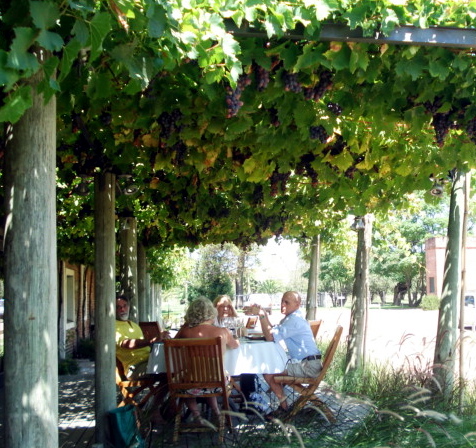
There is a beautiful reception area for dining with classy jazz music softly playing in the background, natural sun light and a cool breeze passing through from the floor to ceiling windows on either side of the room. Adjacent to the winery there is glass-walled building housing a fascinating collection of vintage automobiles dating back to the early 1900s. The best part: they are all still functioning!
This 7-hectare property, purchased in 2003, produces Tempranillo, Merlot, Tannat and Chardonnay grapes. What is very special about this winery is that it’s the only one in South America that produces wines from the Albarinho grape variety. They produce 6,600 bottles of 100% Albarinho wine that is promptly sold out in less than one month.
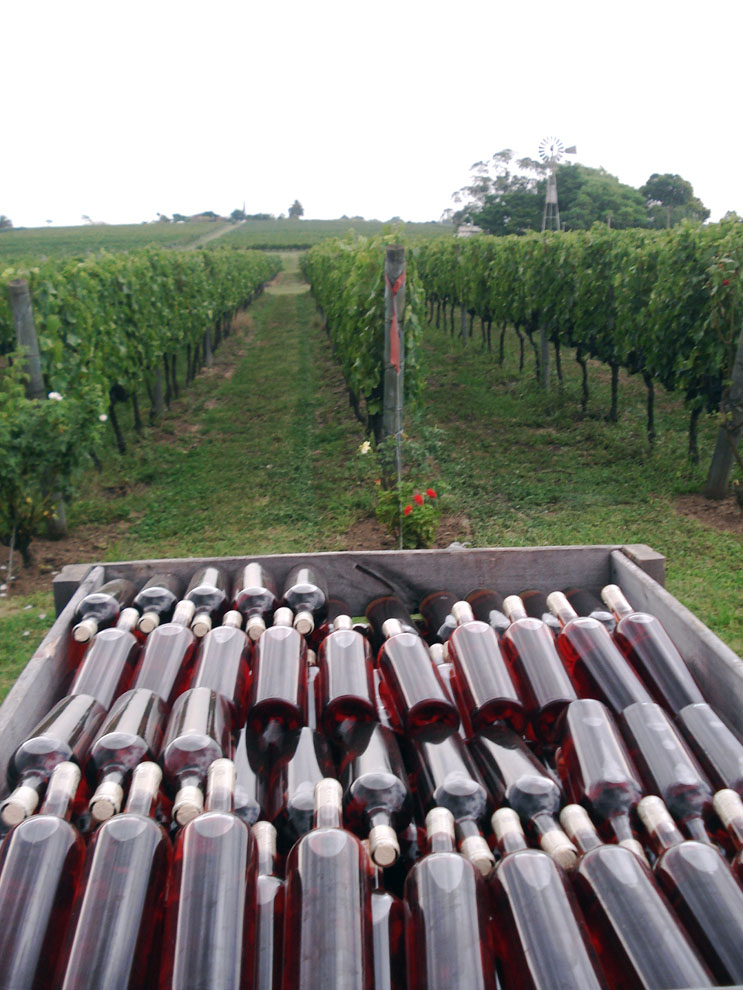
Next visit:
Juan Carrau - Originally from Catalunya in Spain this family immigrated to Montevideo and bought the property from Italian winemakers. They now own both the oldest and the newest wineries in Uruguay. It was the first winery in Uruguay to exclusively produce “vinos finos” (translating to “fine wine” but meaning that they are from European grape varieties) sold in 750ml bottles. While the majority of Uruguay is producing “table wines” for national consumption which are sold in tetrabriques or 3 liter wine jugs.
A fascinating point for me was when the winemaker explained his decision to turn away from French oak barrels for aging (usually giving a more subtle and complex flavor to the wine) and start using more and more American oak (bolder, spicier flavors, usually vanilla). 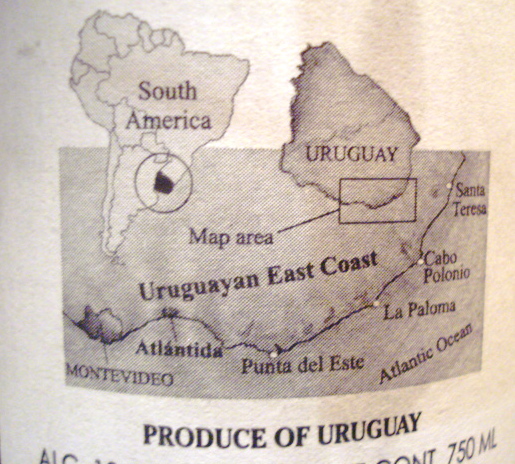
Juanico - This was a striking and vast vineyard with a gorgeous home at the center, where we were greeted with fresh local fruit juices and yerba mate before setting out to see the vines. The wine makers are working on interesting and innovative projects with their vineyards to get the best results in their area. For example in certain sections of the vineyard they cover the ground with plastic in case the rainfall is higher than usual so there is not too much water in the ground. This forces the roots to continue digging deeper to reach water and also prevents the grapes’ taste to become too bland from excess rainwater.
The reputable wines at this bodega are very high quality... and the owners are proud to note that in The Fat Duck (restaurant outside of London, ranked best in the world in 2005) their red wine “Preludio” is the only Uruguay wine on The Fat Duck’s wine list.
And last but not least:
Pisano - A warm, tight-knit family winery with lots of traditions and even more “firsts”. The facilities here are small, and this bodega is more work-orientated (towards high quality wines) rather than relying on wine tourism to build their name. Originally from Italy (and being the only winery in Uruguay to grow the traditionally Italian grape variety Sangiovese) Pisano is all about building and promoting typical Uruguay wines. While they agree that Sauvignon Blanc grows very well in Uruguay, it is not particular in any way, making it hard to compete with New Zealand’s achievements. They insist that Tannat is the door-opener for Uruguay onto the international market. They were the first and only winery to make a sparkling red Tannat...“it’s not red, it’s black,” says the owner “ a real curiosity.” It started as an experiment, but now clients are demanding it more and more. And for after-dinner they have a wonderful Licor de Tannat... sweet and zesty, it leaves a long pleasant finish in your mouth.
10pm - Dinner at El Pallenque
Took a taxi to Mercado del Puerto in Ciudad Vieja (the markets by the port in Montevideo’s old town). A lovely and lively part of the city with narrow streets lined with bars and restaurants with most table seating outdoors under huge umbrellas lit up by warm, dancing candle flames…
We started our feast with a local aperitif called 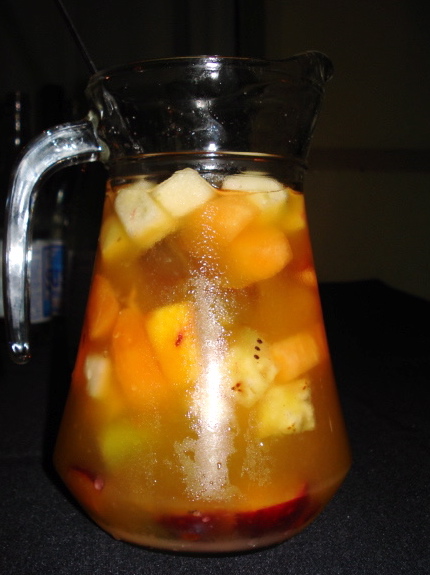
If dining in a big group it’s a good idea to order the Parrillada (pronounced “pary-chada”). This is a big Uruguay-style barbecue that is served in different stages. There are delicious platters of melted cheese cooked with local herbs and spices to begin with...tastes a little like a great margherita pizza if you eat this with some bread.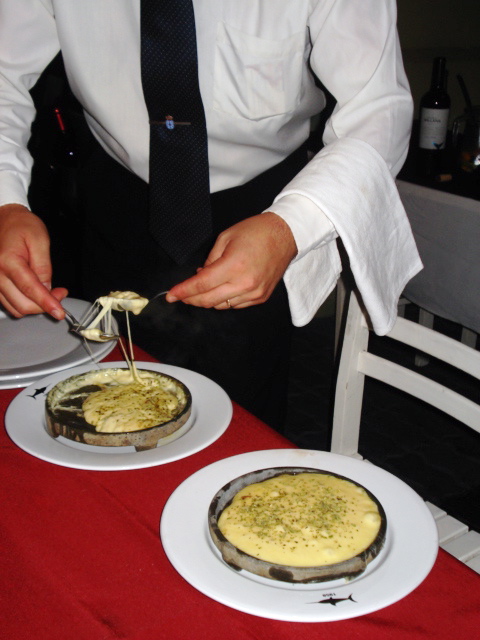
Next is a sizzling platter of “Charcuterie”- different animal organs and sausages served with a fresh chimichurri sauce made of garlic, onions, spicy peppers, citrus juice and green herbs...very tasty! Although to be honest I could not stomach eating any of the actual organs...I would need to spend more than a day here to get used to this sort of barbecue. 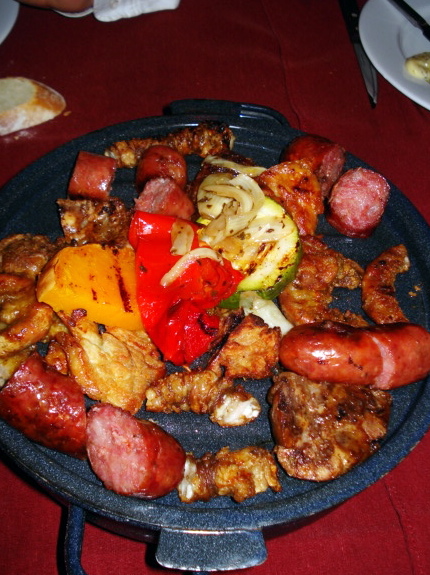
Finally there is the fresh salad with medium-rare beefsteaks from the grill. Absolutely amazing paired with a robust Uruguay Tannat variety wine! We tasted wines from several different producers with various blends. Some of my favorites included:
• Varela Zarranz- 100% Tannat which was aged 12 months in oak barrels. An open fruity nose with some spice and a hint of vanilla… in the mouth it’s fresh and smooth as silk, but with a good structure from tannins and a fruity, lingering finish.
• Alto de la Ballena - an interesting blend of red Tannat grapes with white (typically floral) Viognier grapes- 2006 Reserva, very well balanced with aromas of fruit and subtle flowers.
Next day:
Woke up early to take the “Buquebus.” a bus to the port, and then a boat to cross the Rio de la Plata to Buenos Aires, Argentina!


